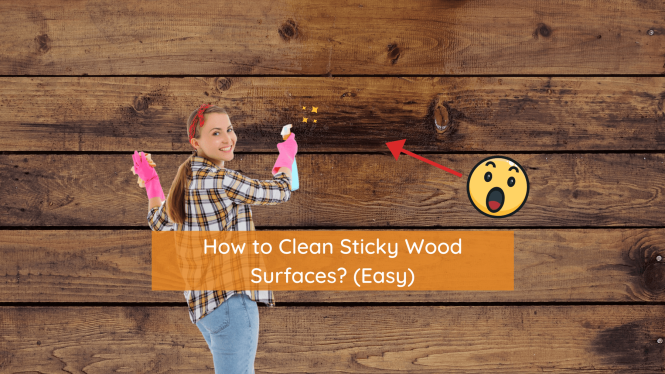

Tackling sticky surfaces on furniture is a common household dilemma. Whether it’s sticky spills, kids’ gooey creations, or stubborn adhesive residue, sticky messes can ruin the aesthetic appeal of our beloved furniture. This guide provides a comprehensive approach to dealing with sticky residue on various furniture types, offering effective methods and safe cleaning agents. We will cover everything from identifying the type of sticky substance to choosing the correct cleaning solution for a range of surfaces, including wood, fabric, and upholstery. The aim is to provide practical steps and solutions to resolve sticky residue issues without causing damage. Let’s dive in and transform your sticky furniture woes into clean, spotless surfaces!
Identifying the Sticky Substance
Understanding the Nature of the Mess
The first step in cleaning sticky residue is identifying the source of the stickiness. Is it a food spill, adhesive residue, or something else? Knowing the type of substance will determine the appropriate cleaning method. Different materials react differently to various cleaning agents. For instance, sticky food residue might require a different approach than sticky glue or gum. Identifying the source allows for targeted and effective cleaning methods that minimize the risk of damage to your furniture.
Choosing the Right Cleaning Agent
Selecting Cleaning Products
Once you have identified the sticky substance, select the appropriate cleaning agent. Avoid harsh chemicals that can damage the furniture’s finish. For general sticky spills, a mild dish soap solution often works well. For tougher substances, specialized cleaning solutions might be necessary. Always test any cleaning solution in an inconspicuous area first to ensure it doesn’t damage the finish. A few drops on a hidden area will give you a clear picture of the solution’s efficacy and safety.
Preparing Your Cleaning Supplies
Gather your cleaning supplies, such as a soft cloth, sponge, or spray bottle, and cleaning agents. Ensure that you have adequate ventilation to avoid any harmful fumes or unpleasant odors from cleaning agents.
Applying the Cleaning Solution
Applying Cleaning Agents
Apply the chosen cleaning solution to the sticky area, ensuring the solution is not too concentrated. Use a soft cloth or sponge to gently wipe the sticky residue. Work in small, circular motions to loosen the sticky substance without damaging the surface. Avoid harsh scrubbing or pressure, as this may damage delicate surfaces.
Removing Sticky Residue
Depending on the type of sticky substance, different methods may be needed for removing the sticky residue. For example, for sticky food residue, you might use a hot cloth or warm water with mild detergent. For glue, you could use a commercial glue remover. Remember to use a mild detergent and avoid excessive water or harsh abrasives. Apply pressure carefully, and don’t saturate the area, which could lead to further damage.
Specialized Cleaning for Specific Surfaces
Cleaning Wood Furniture
For wooden furniture, avoid using excessive moisture or harsh chemicals. Use a mild cleaning solution and a soft cloth to wipe the surface gently. Wipe up any excess moisture immediately. Never immerse wooden furniture in water. Avoid products containing bleach or abrasive materials. Consider using a wood-specific cleaner to maintain the finish.
Cleaning Fabric Furniture
For fabric furniture, spot clean the affected area. Test the cleaning solution on an inconspicuous area first to ensure that it doesn’t cause discoloration or damage the fabric. Use a clean cloth or sponge to blot the area gently, removing excess moisture quickly. Avoid rubbing or scrubbing, as this might damage the fibers.
Preventing Future Sticky Surfaces
Preventing future spills or messes
Prevention is always better than cure! Take precautions to prevent sticky messes from forming in the first place. Use placemats or coasters to protect your furniture. Keep food and drinks away from furniture and ensure that spills are addressed immediately to avoid sticky residue.
Maintaining furniture
Regular maintenance, including dusting and cleaning, can help prevent sticky residue buildup. Keep the furniture surfaces clean to prevent dirt and debris from accumulating, which could attract or harbor sticky substances.
Additional Tips and Tricks
Conclusion
Final Thoughts
Further reading on furniture maintenance
Frequently Asked Questions
Q: What if the sticky residue is very stubborn?
A: If the sticky residue is particularly stubborn, you can try using a specialized adhesive remover or a mixture of isopropyl alcohol and water. Apply a small amount to the residue and let it sit for a few minutes before gently wiping it away with a soft cloth. However, always test in an inconspicuous area first. For particularly tough residue, a professional cleaning service might be recommended. Always prioritize safety and follow product instructions when using chemicals.
Q: What cleaning products should I avoid?
A: Avoid using abrasive cleaners, bleach, or harsh chemicals on furniture surfaces, as they can damage the finish or stain the fabric. Always test cleaning solutions on an inconspicuous area to ensure compatibility with the material. Look for cleaning products specifically formulated for furniture cleaning.
In conclusion, cleaning sticky surfaces on furniture requires a multi-step approach tailored to the specific material. By understanding the type of surface, you can choose the right cleaning agents and methods, effectively removing sticky residue without damaging the furniture. Remember to test any cleaning solution in an inconspicuous area first. Now you are equipped to tackle those sticky messes! For more cleaning tips, check out our blog post on general home cleaning strategies.